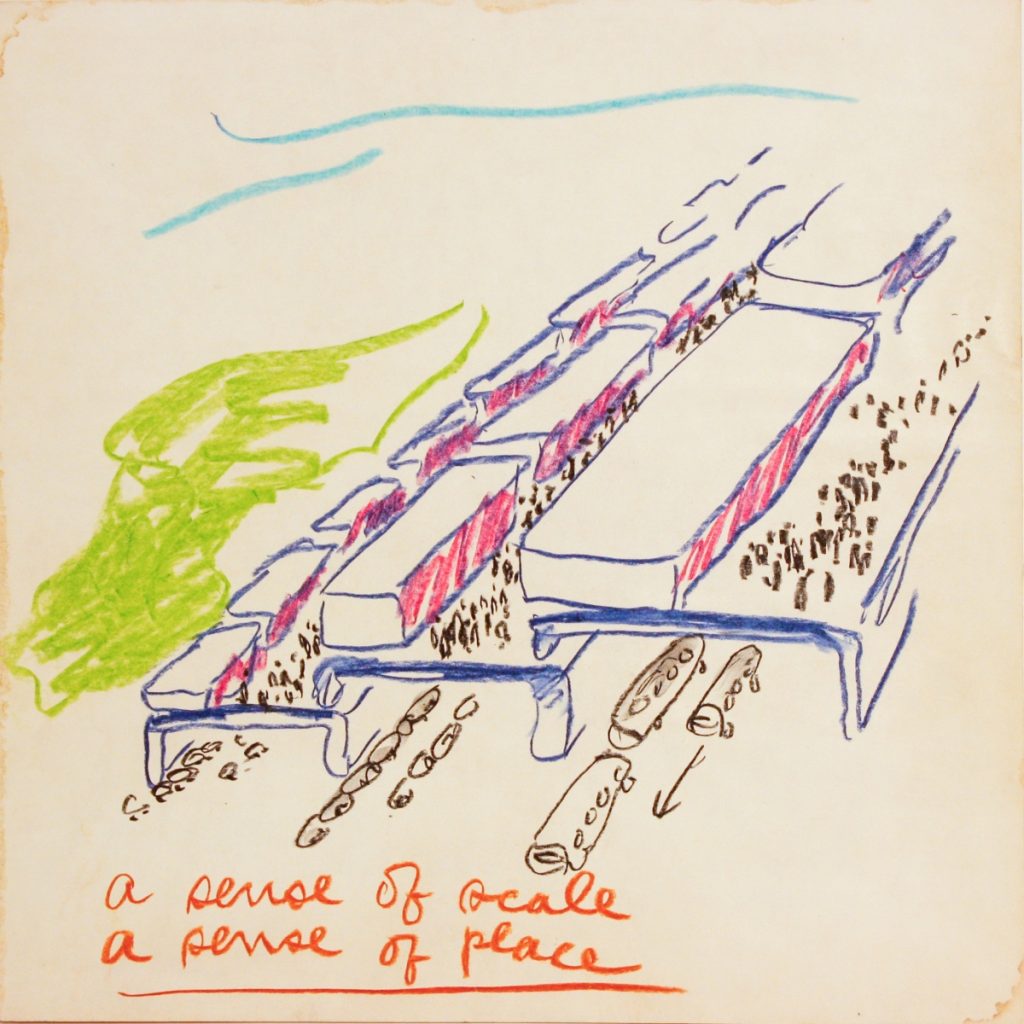“A frame in which all the functions of a city or part of a city are housed. It has been made possible by present day technology. In a sense it is a man-made feature of the landscape. It is like the great hill on which Italian town were built.”
Fumihiko Maki, Investigations in Collective Form. St. Louis, 1964.

At the beginning of the 1960s, Peter Eisenman and Michael Graves arrived as professors to Princeton University and started to collaborate in several projects and competitions. Linear City has become one of the most remarkable projects of this period of partnership
.A principios de los años 60, al poco de llegar como profesores a la Universidad de Princeton, Peter Eisenman y Michael Graves empiezan a colaborar en la elaboración de varios proyectos y concursos. Con el paso del tiempo Linear City se ha convertido en uno de los más destacados de este periodo conjunto.
The project attempted to create a continuous urbanism that would go through the west coast, from Boston to Washington DC. They chose a specific urban void of 22 miles in the New Jersey State to locate this megastructure. Linear City is defined by to large horizontal strips: one of them for industry, and the other for housing, offices and stores. the proposal, unlike being an utopia, it is featured by its viability within the urban and cultural framework of the United States because it is defined by a large infrastructure that supports the project itself.
El proyecto trataba de crear un urbanismo continuo que recorriera toda la Costa Este, desde Boston a Washington. Para ello, encontraron un vacío urbano específico de 22 millas en el estado de New Jersey donde situarían su megaestructura. Linear City está definida por dos grandes franjas horizontales: una de ellas industrial y la otra un conjunto continuo de viviendas, tiendas y oficinas. La propuesta, pese a ser utópica, se caracteriza por su viabilidad dentro del marco urbano y cultural de los Estados Unidos, ya que se define como una infraestructura que soporta el resto del proyecto.







